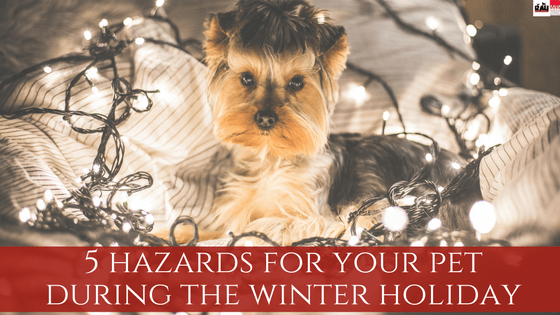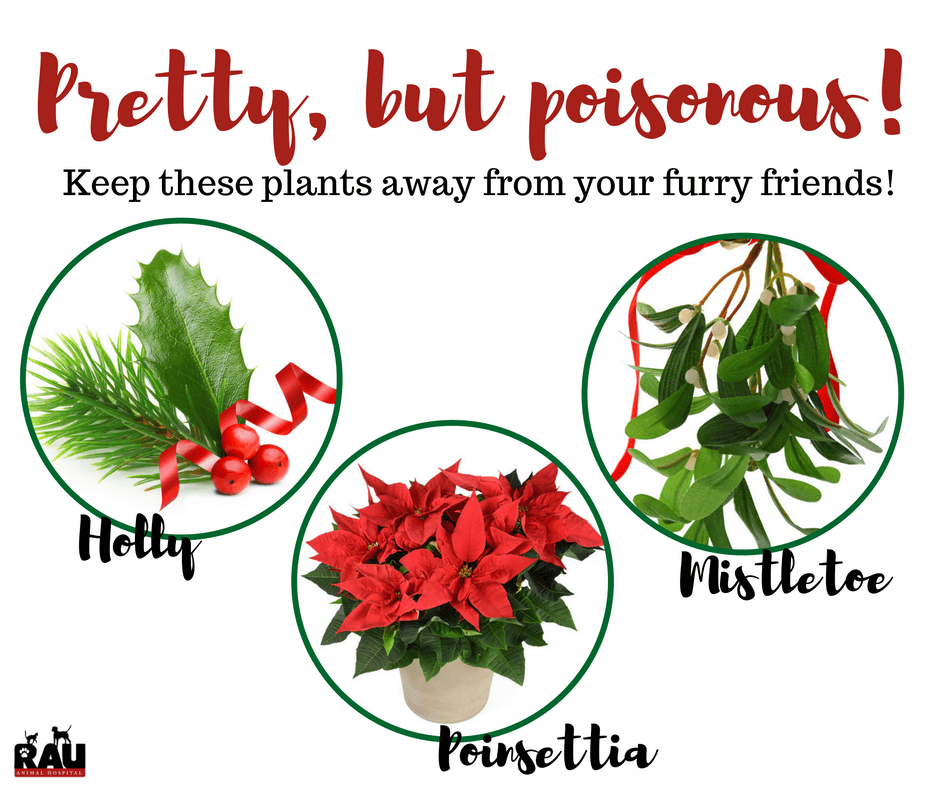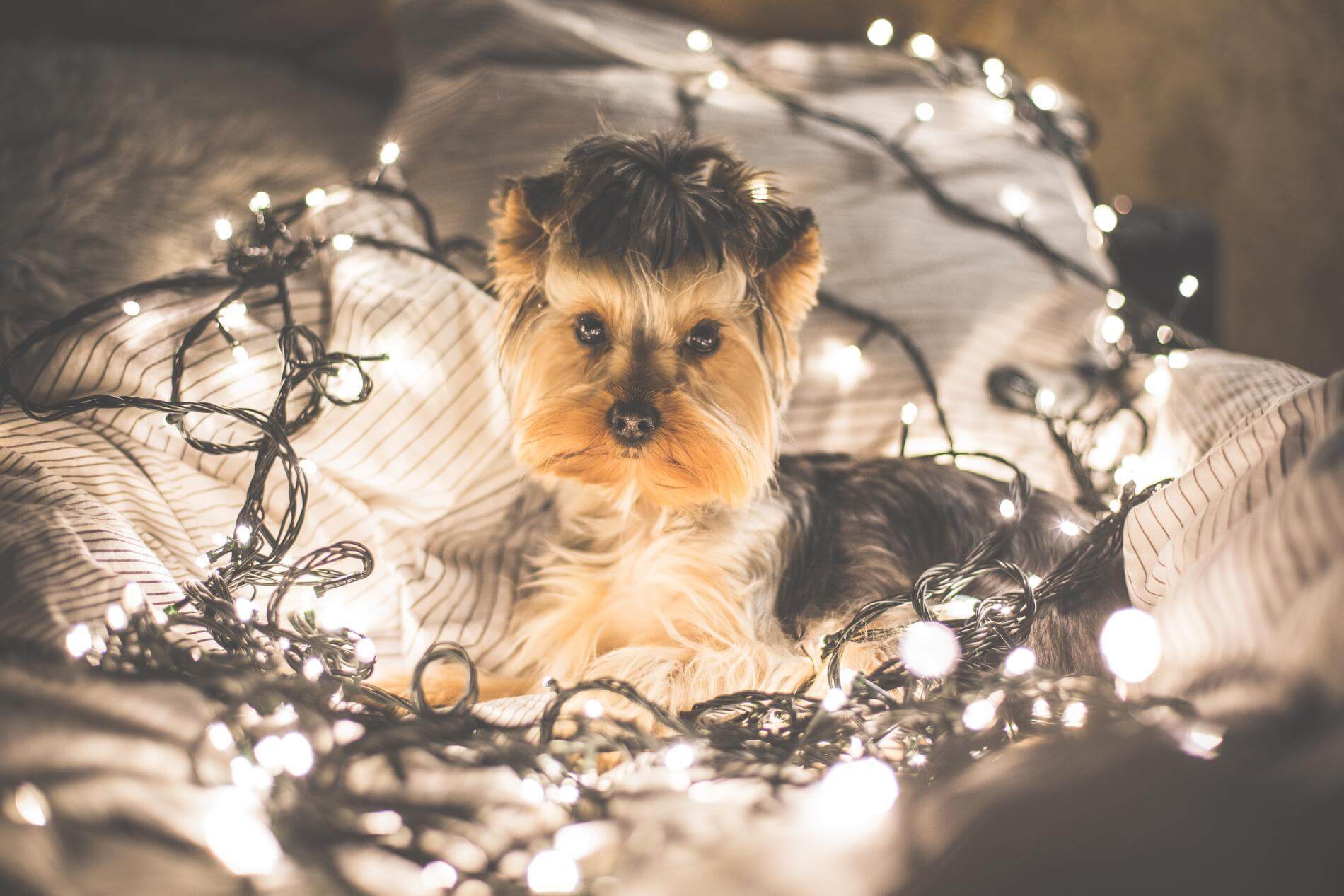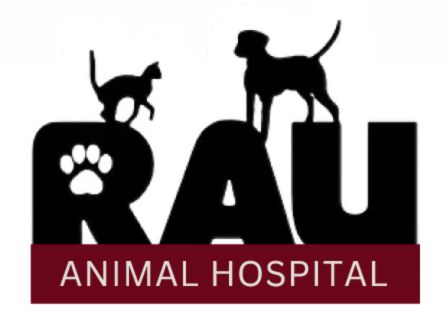
The winter holidays are a festive time for everyone; however, with extra hustle and bustle, we can easily overlook added dangers to our furry friends. Here is a list of the top six winter holiday hazards to keep in mind, to ensure a merry holiday for all.
1. Christmas Trees
Securely anchor your Christmas tree in a corner, blocked off from your pet’s wandering eyes to avoid having your tree tip and fall, causing possible injury to your pet. If you have a live Christmas tree, keep the area clear of fallen pine needles. If ingested, the needles can puncture your pet’s intestines.
Helpful Tip:
To keep your dog or cat from attempting to jump onto the tree, you can place aluminum foil, a plastic drink bottle filled with knick knacks, or anything else that creates noise on the tree’s bottom limbs to warn you of an impending tree disaster. 2. Holiday Plants
2. Holiday Plants
Holly, when ingested, can cause pets to suffer nausea, vomiting and diarrhea. Mistletoe, another Christmas plant, can cause mild signs of gastrointestinal upset, if ingested in small amounts; however, when ingested in large amounts, mistletoe can cause abnormal heart rate, seizures, and in some cases, death. Poinsettias, although mildly toxic to pets, can cause mild signs of vomiting, drooling, or diarrhea. And many varieties of lilies, can cause kidney failure in cats if ingested. Opt for just-as-jolly artificial plants made from silk or plastic, or choose a pet-safe bouquet.
3. Tinsel
Kitties love this sparkly, light-catching “toy” that’s easy to bat around and carry in their mouths. But a nibble can lead to a swallow, which can lead to an obstructed digestive tract, severe vomiting, dehydration and possible surgery. It’s best to brighten your boughs with something other than tinsel.
4. Holiday Ornaments
Bright and colorful tree ornaments can also catch your pet’s attention. Be sure to place glass and aluminum ornaments higher up on the tree and clean up any broken pieces immediately. Pets can chew and swallow these sharp edges; which can not only create a choking hazard, but also lacerate your pet’s mouth, throat and intestines.
5. Lights and Candles
Burning candles should always be placed in appropriate candle holders on a high shelf or mantel, and away from curious pets. It is also very important to never leave lit candles unattended – it only takes one swing of a wagging tail to cause a fire! Do you have a pet that likes to chew? Electrical shock can occur if your pet chomps down on an electrical cord, causing tongue lacerations or worse. Check your holiday lights for signs of fraying or chewing, and use a grounded three-prong extension cord as a safety precaution.

Photo Credit: Viktor Hanacek on PicJumbo
Helpful Tip:
Draw the line! If you notice that your pet is especially fixated on a particular holiday decoration, e.g., snatching the same sprig of holly off of the Christmas tree or batting around the same piece of tinsel – it may be a good idea to remove that particular decoration, or in some cases, separate your pet from that area of the house. Keeping room doors closed or creating a barrier with a baby gate are great options for keeping your pets separated from potential hazards. Additionally, simply removing those “problem” items from your holiday decorations can ensure that your pets are kept away from them.
